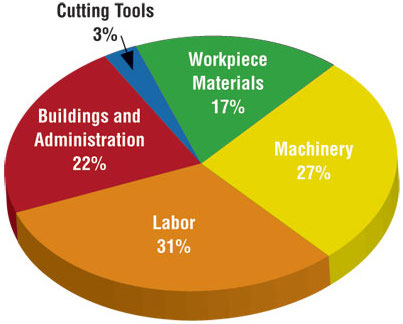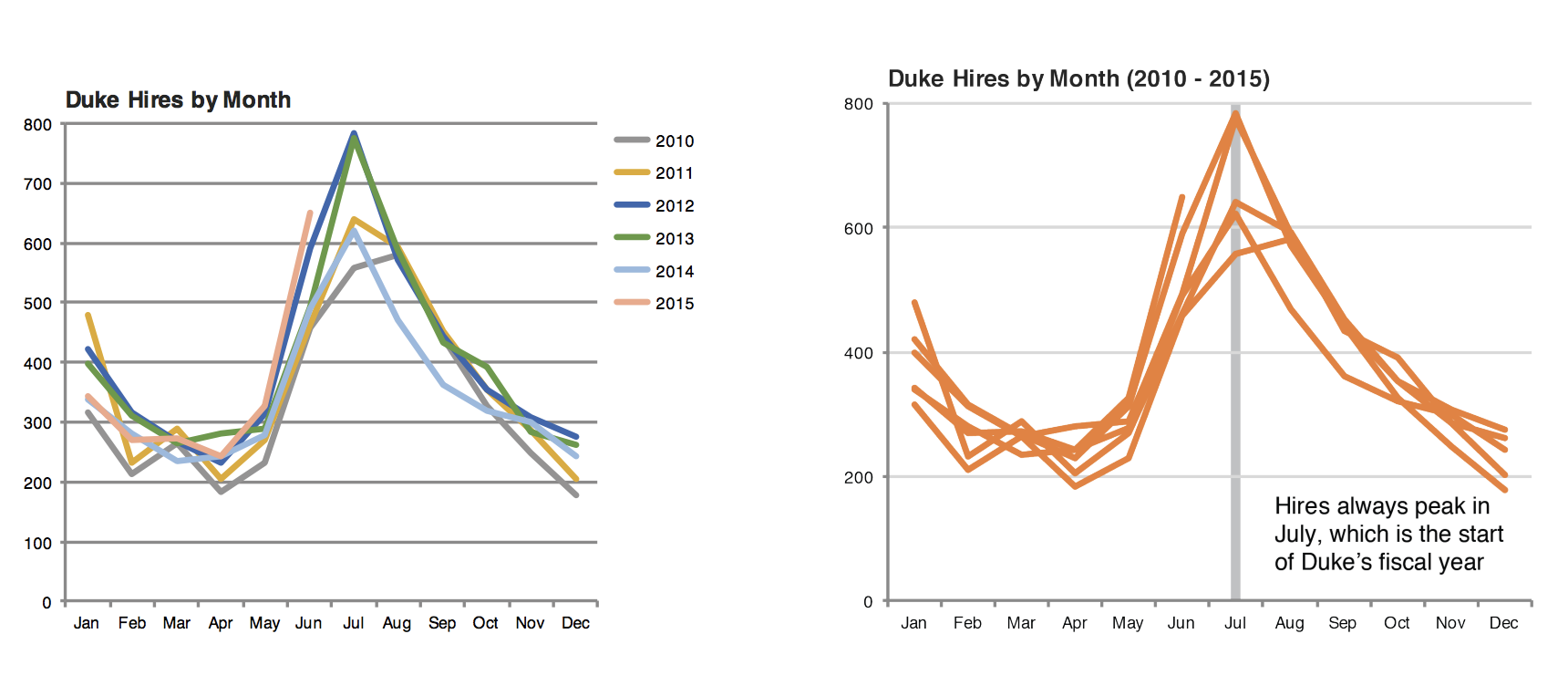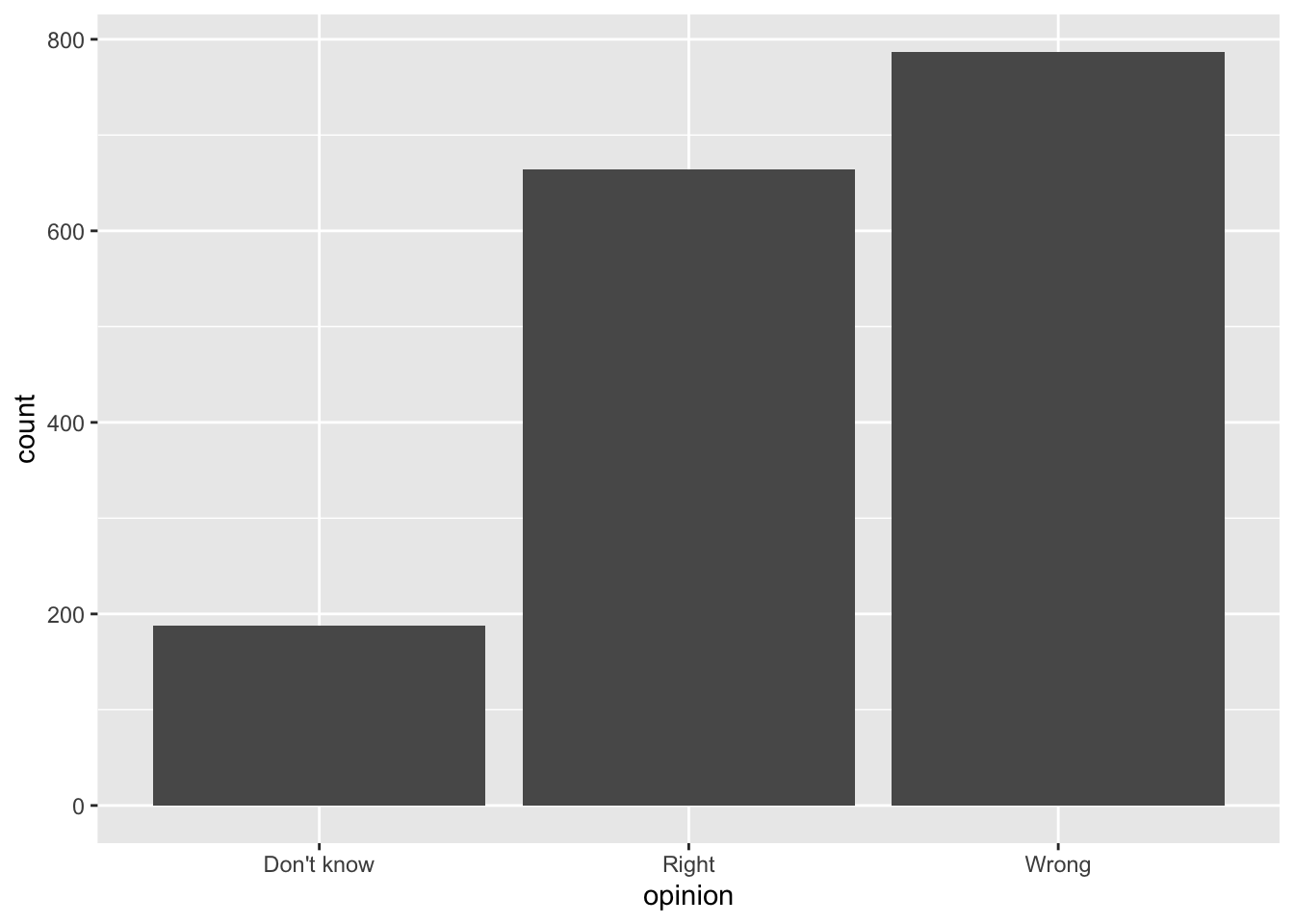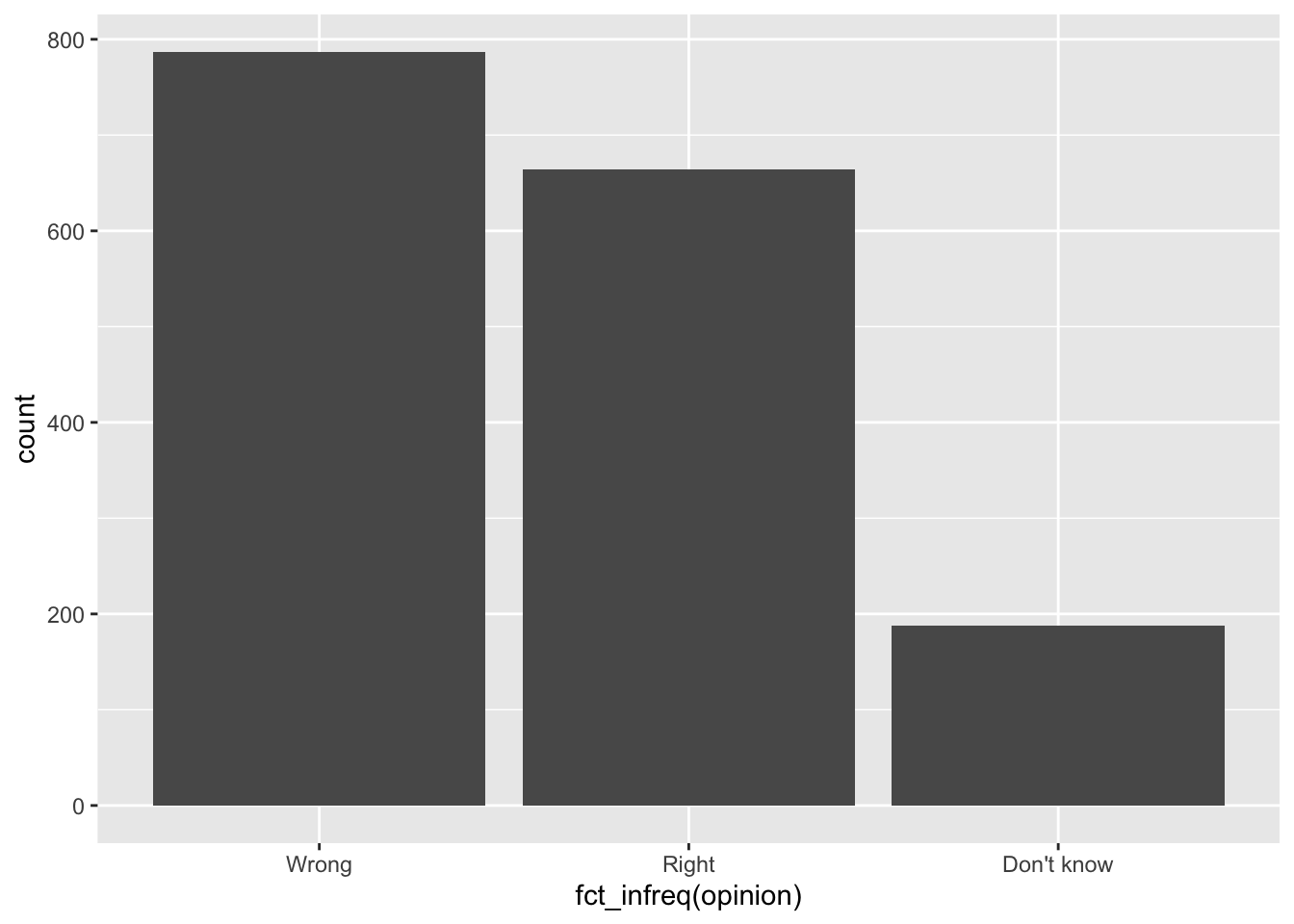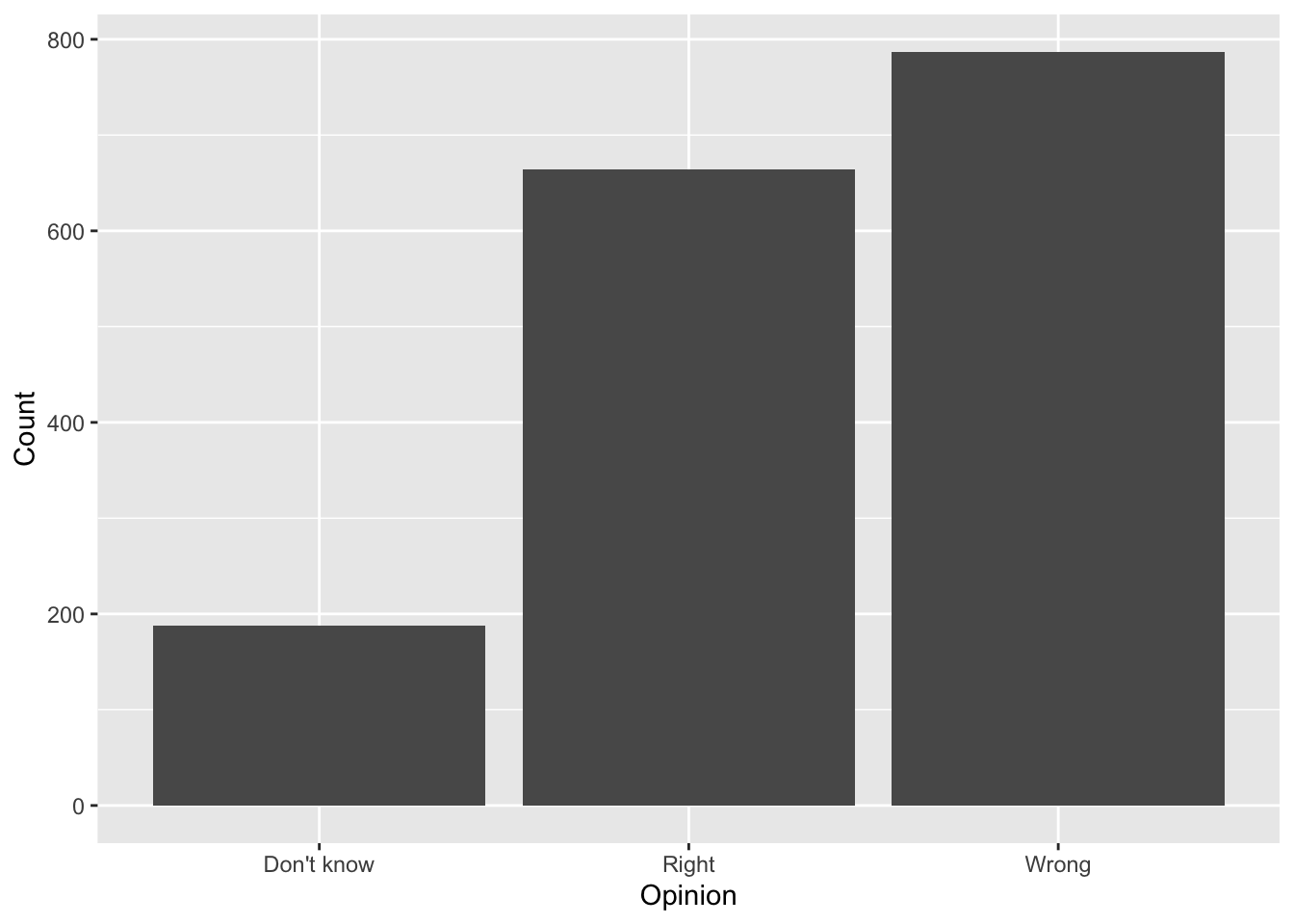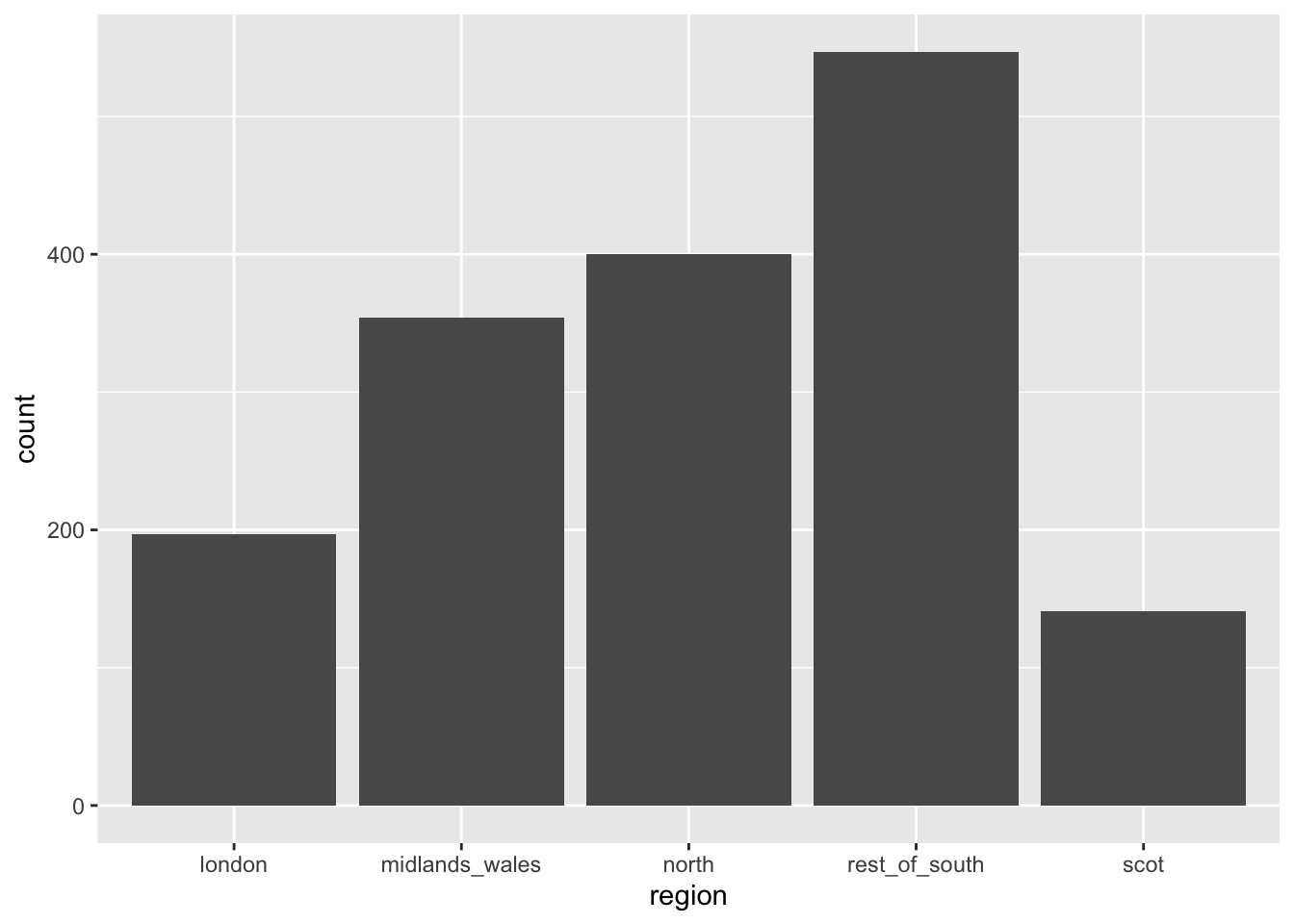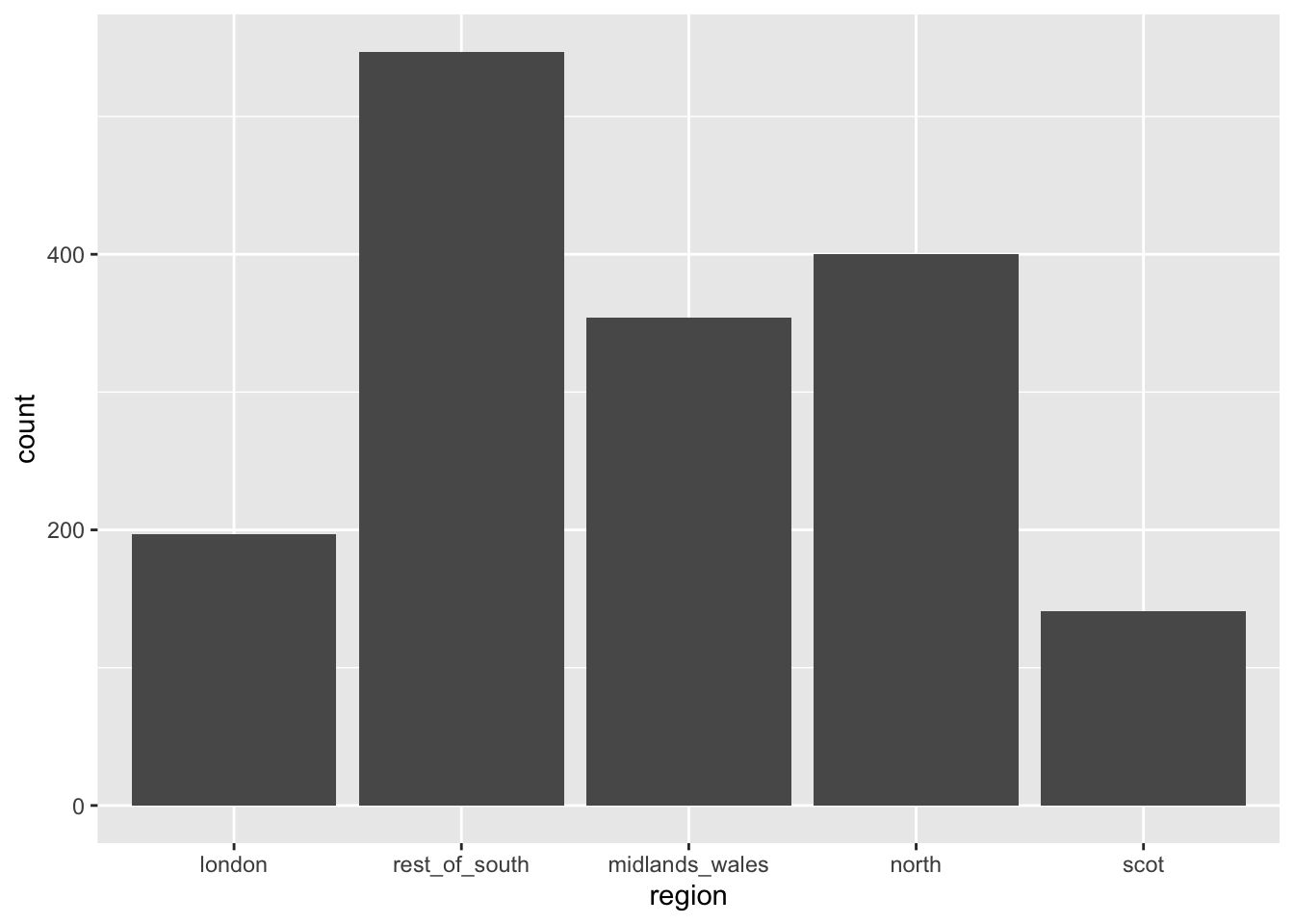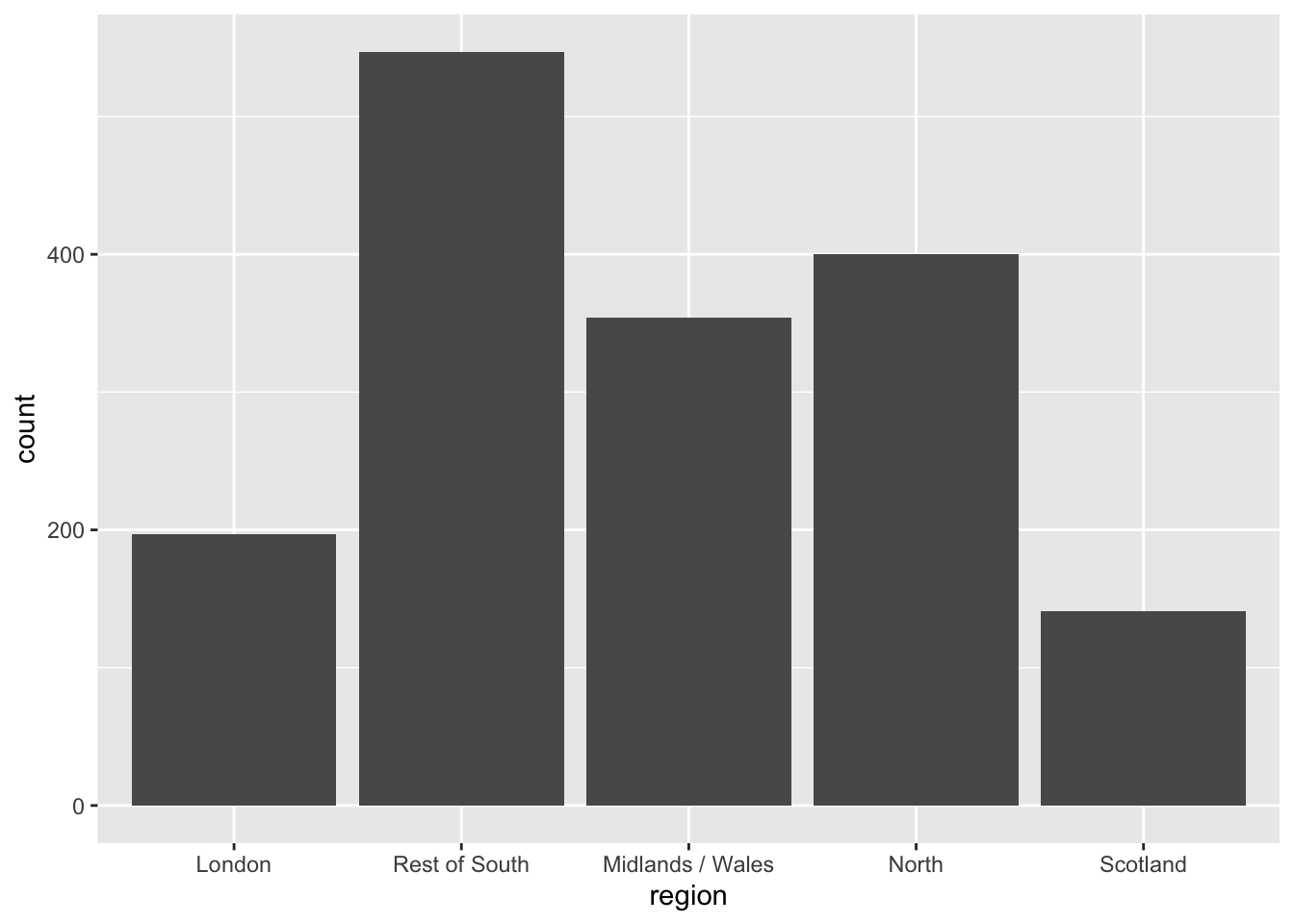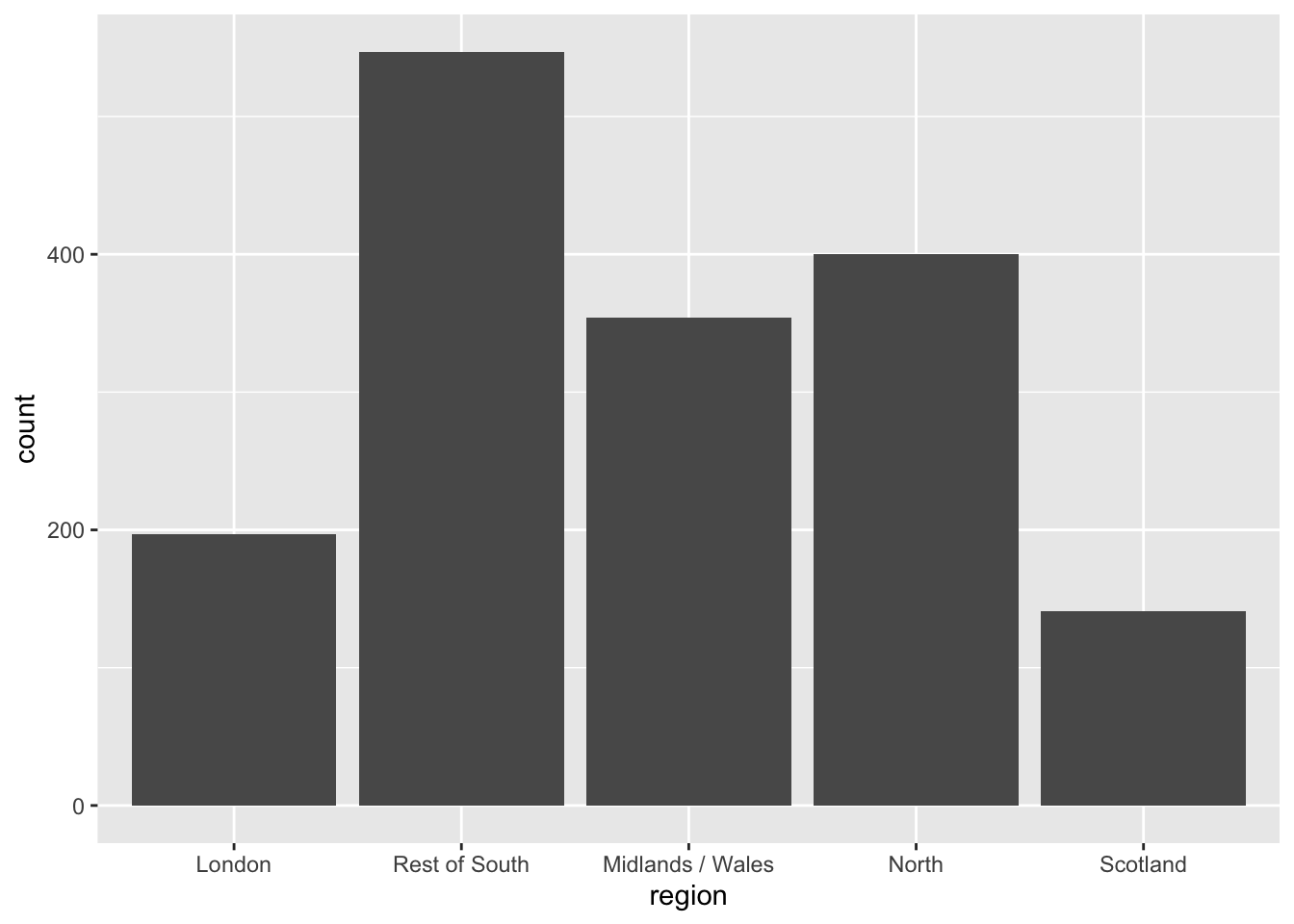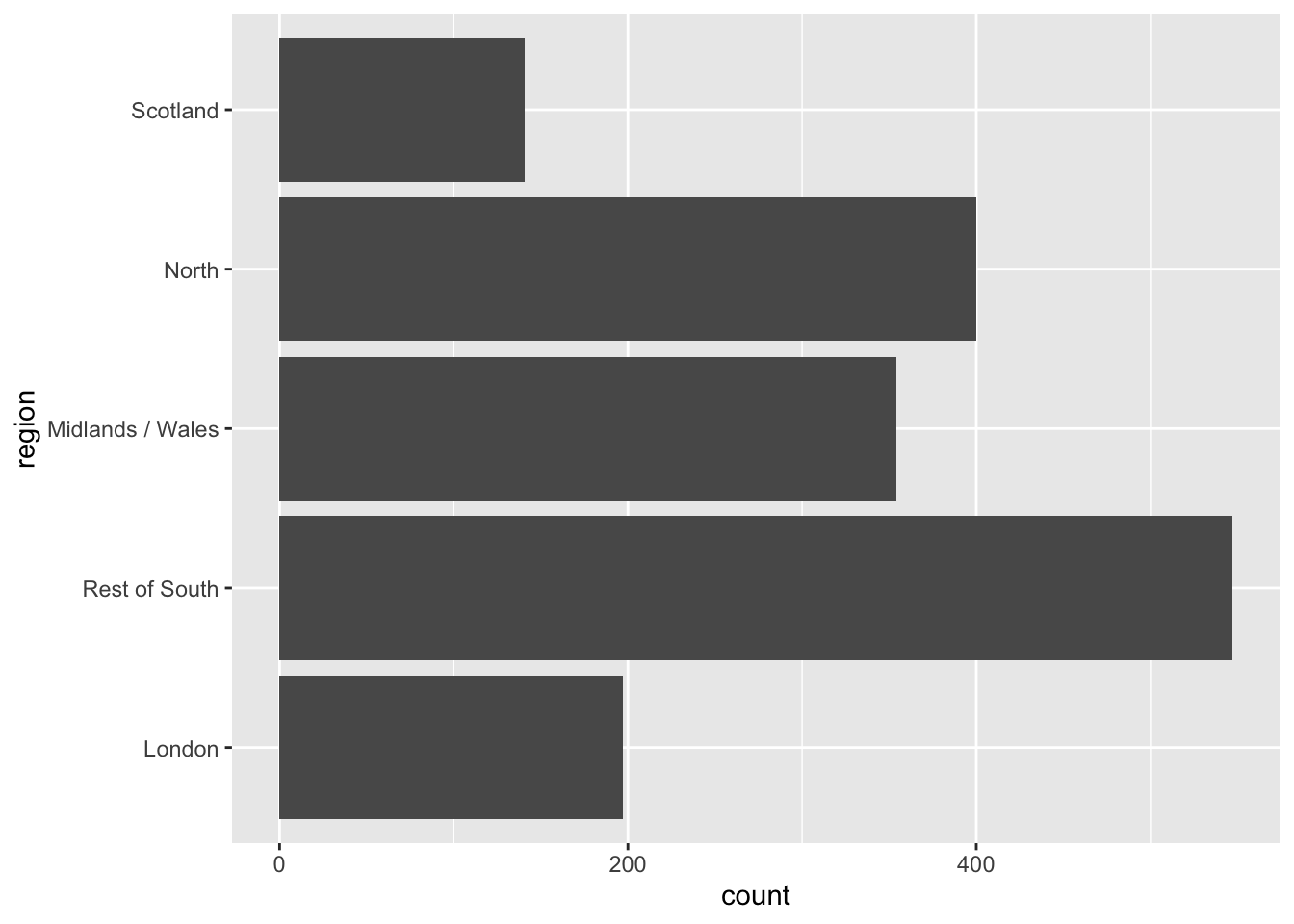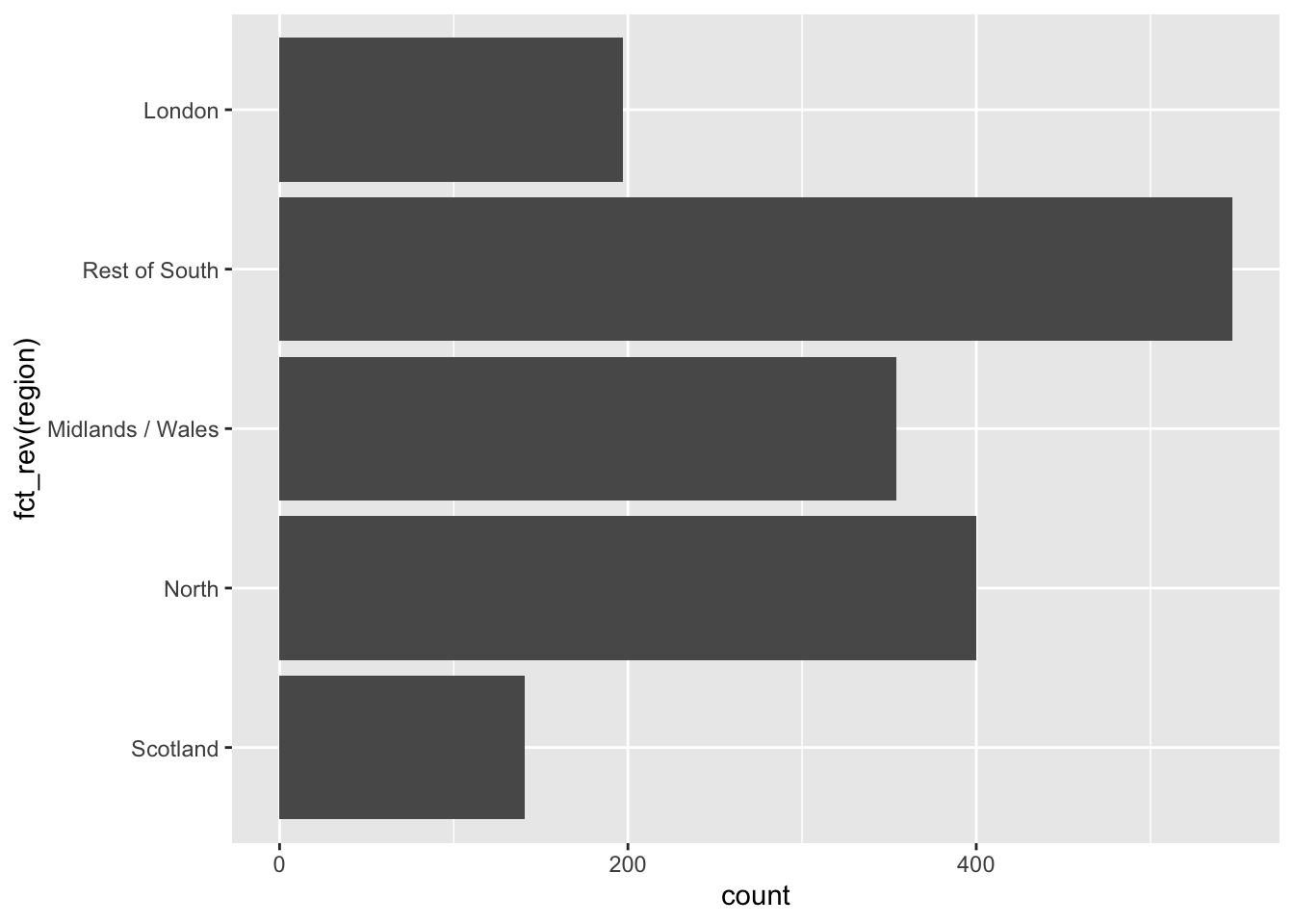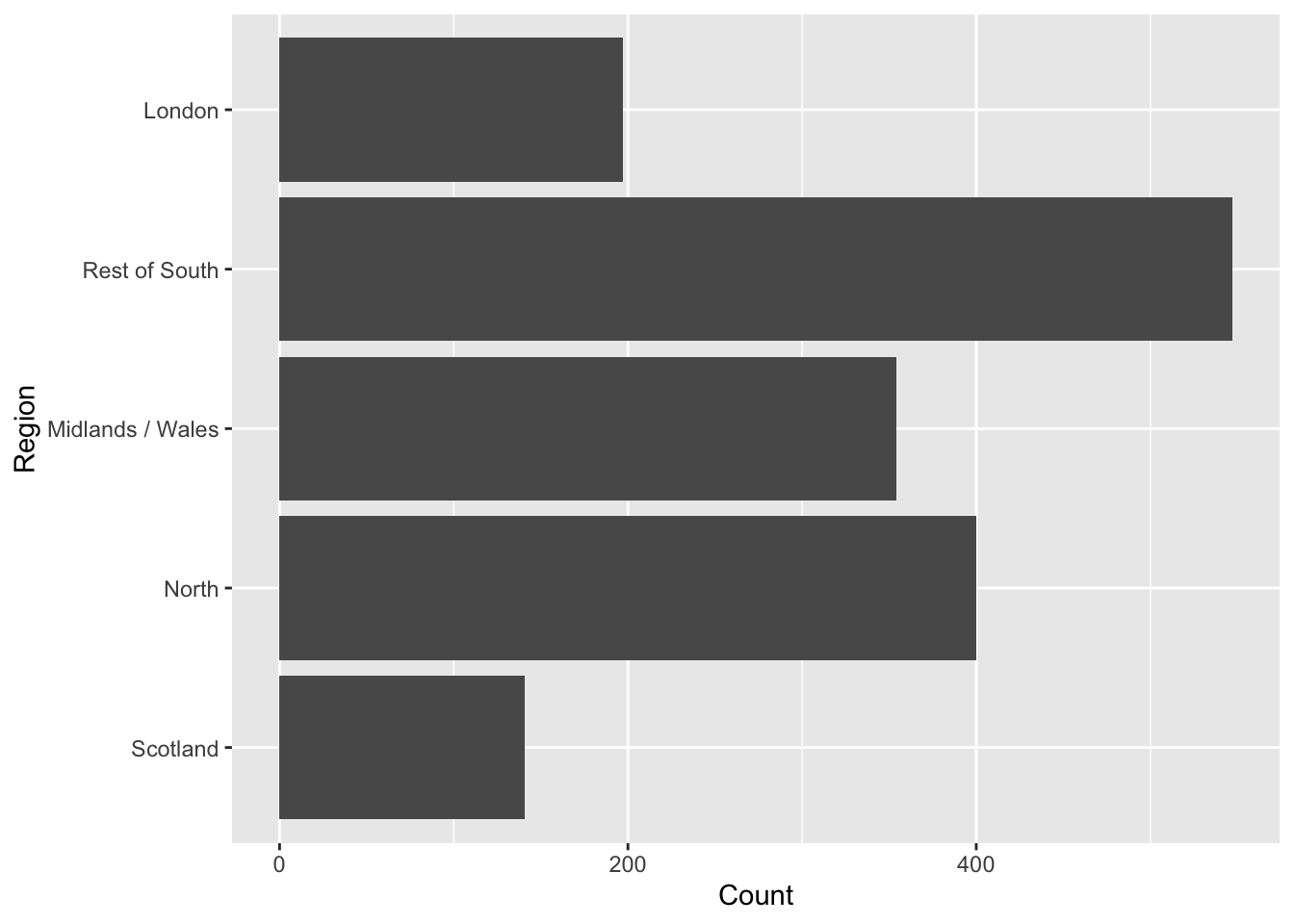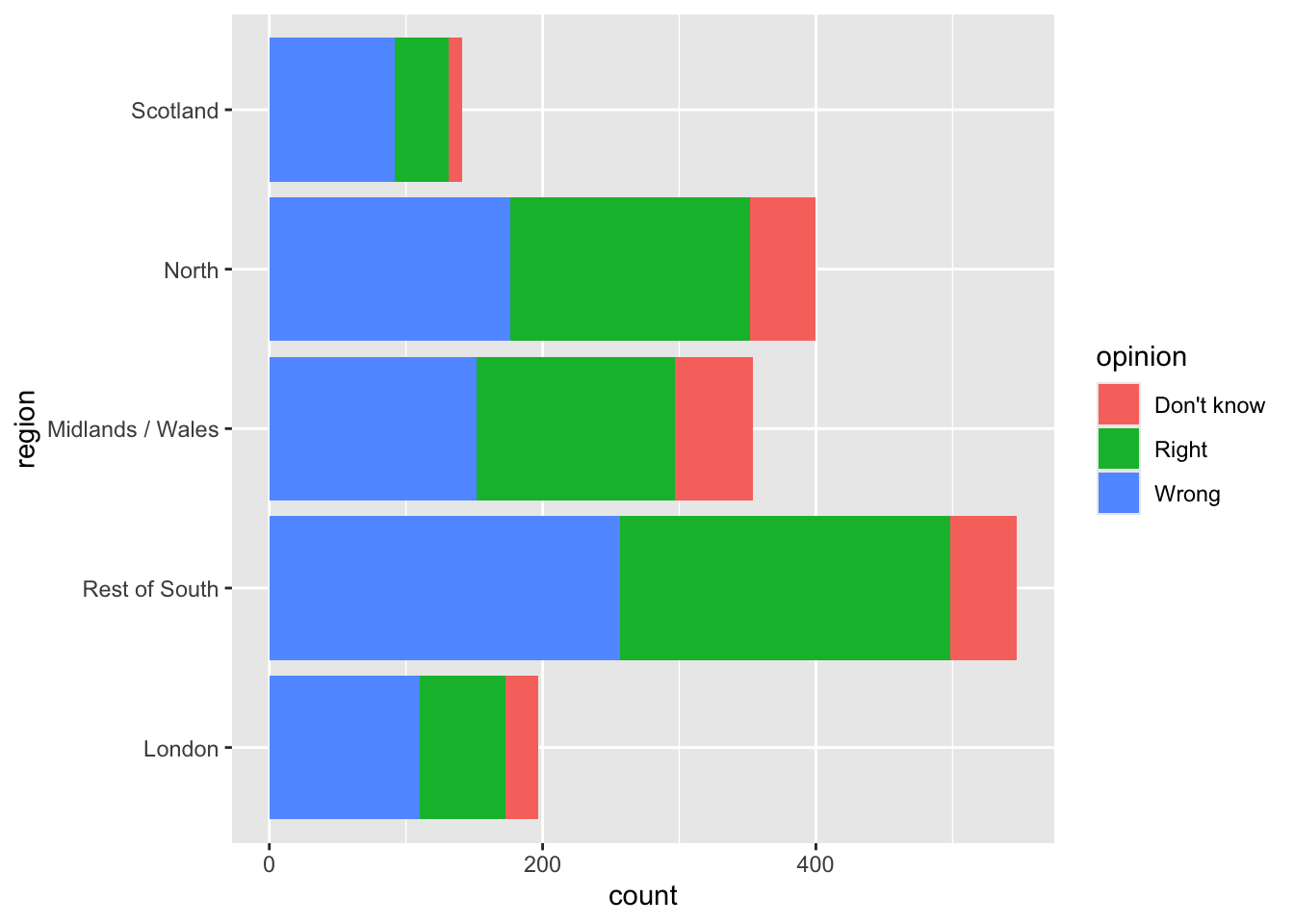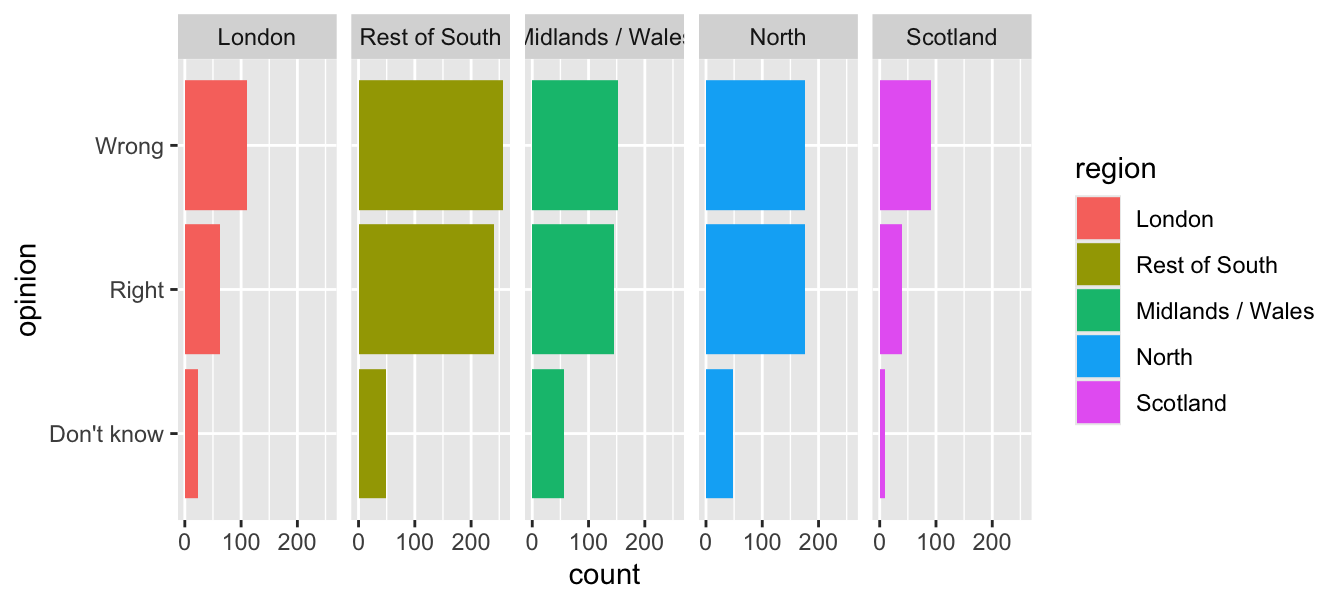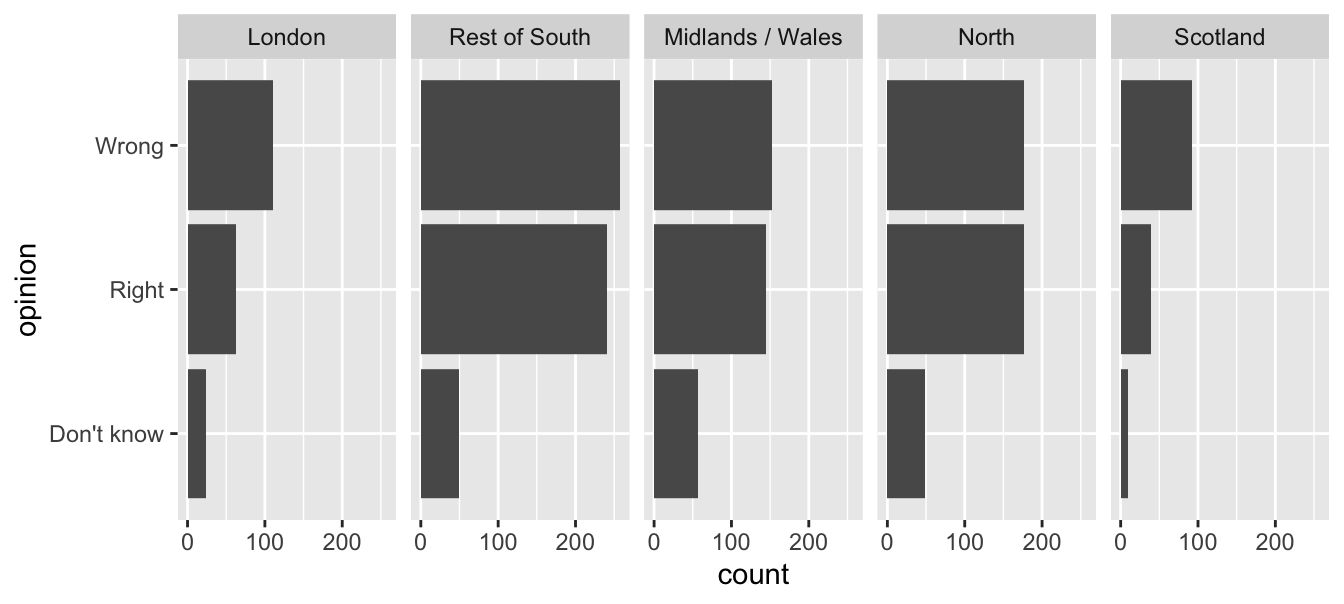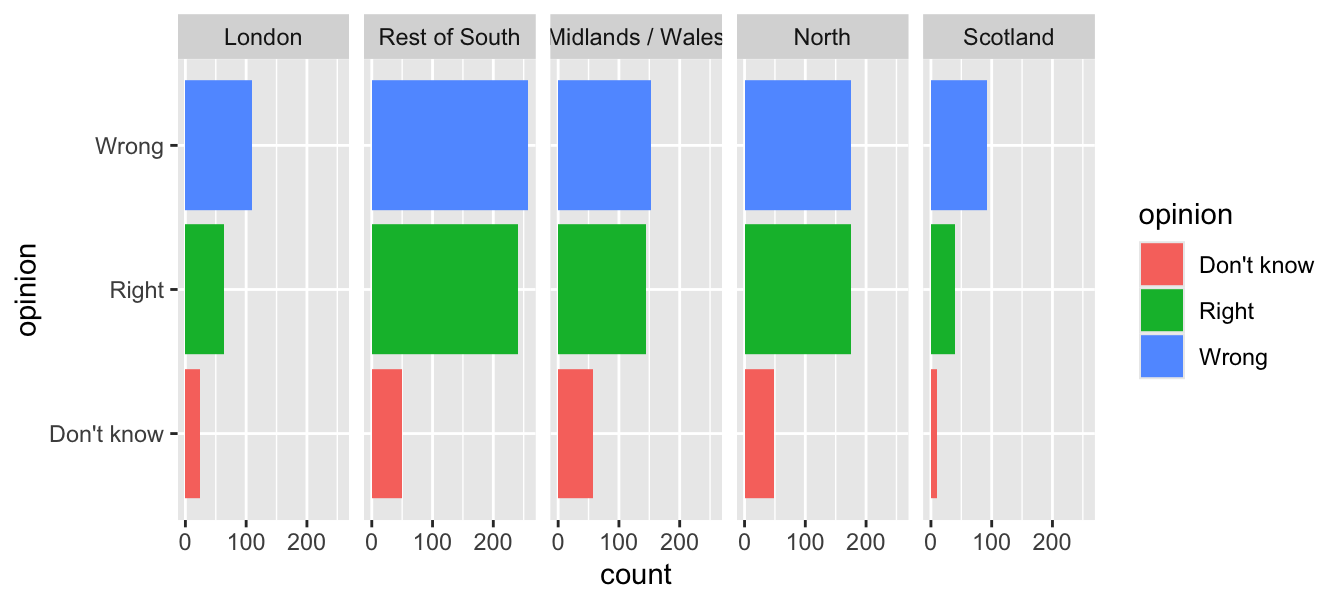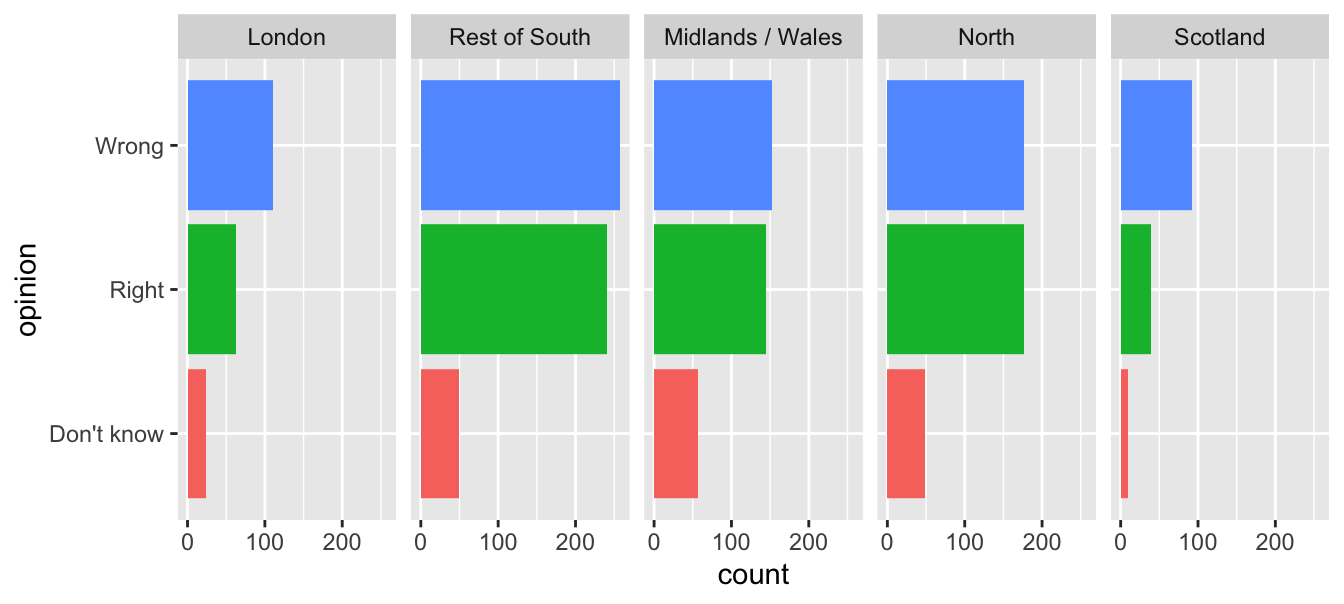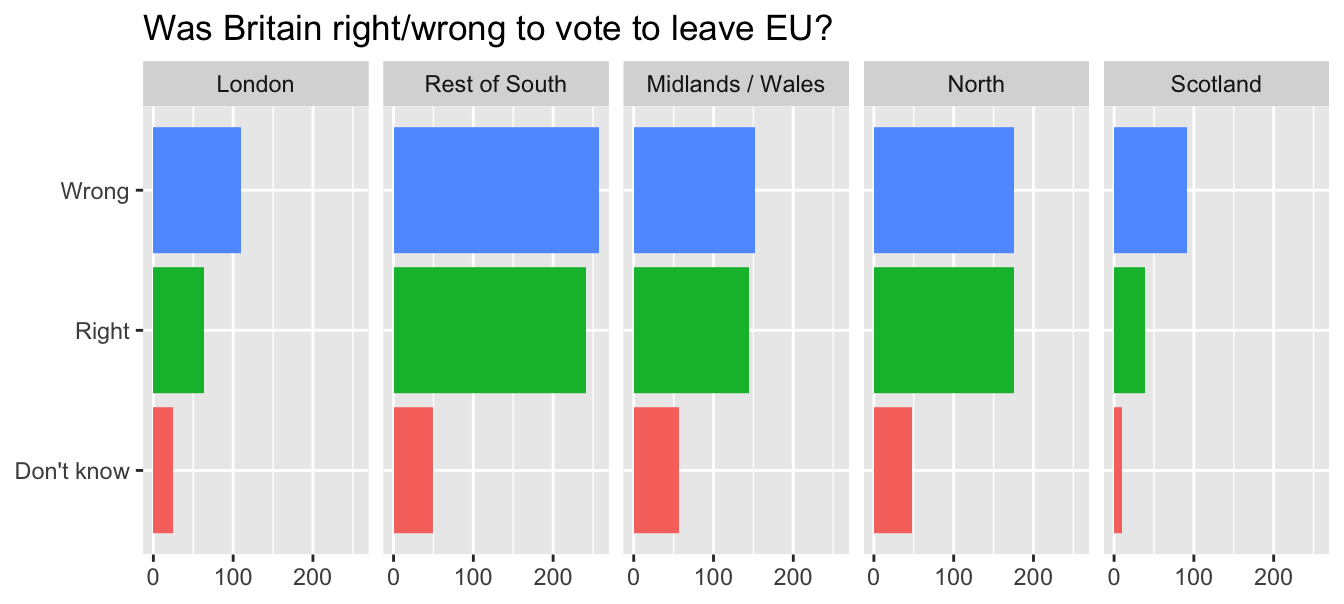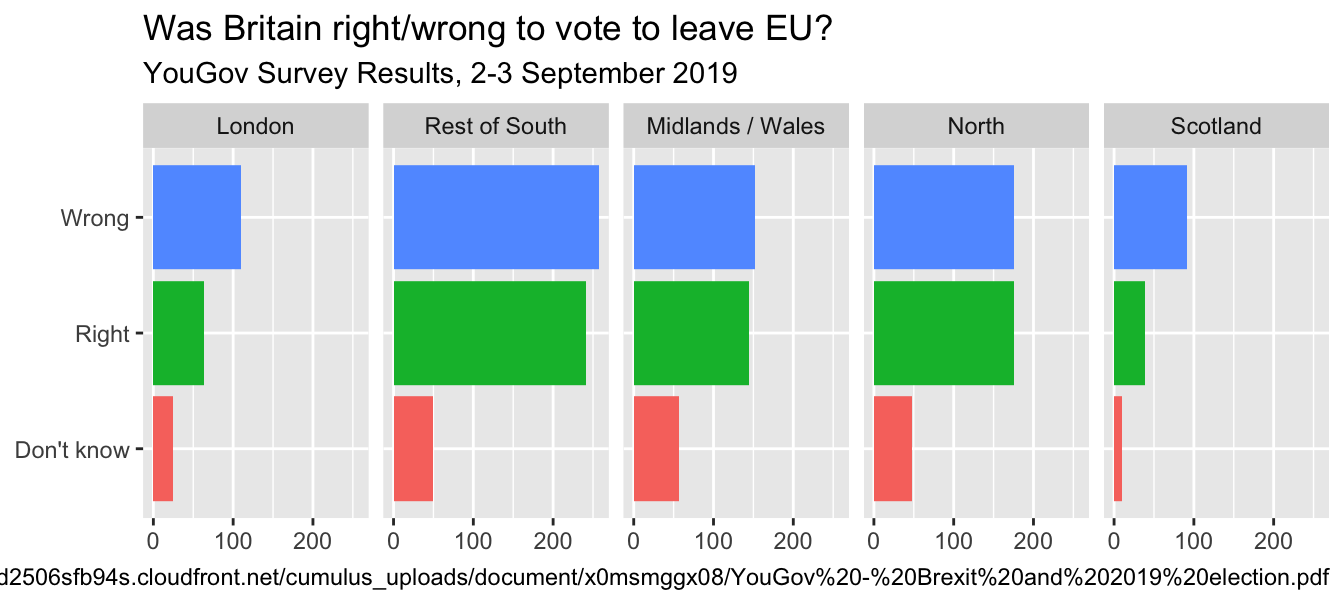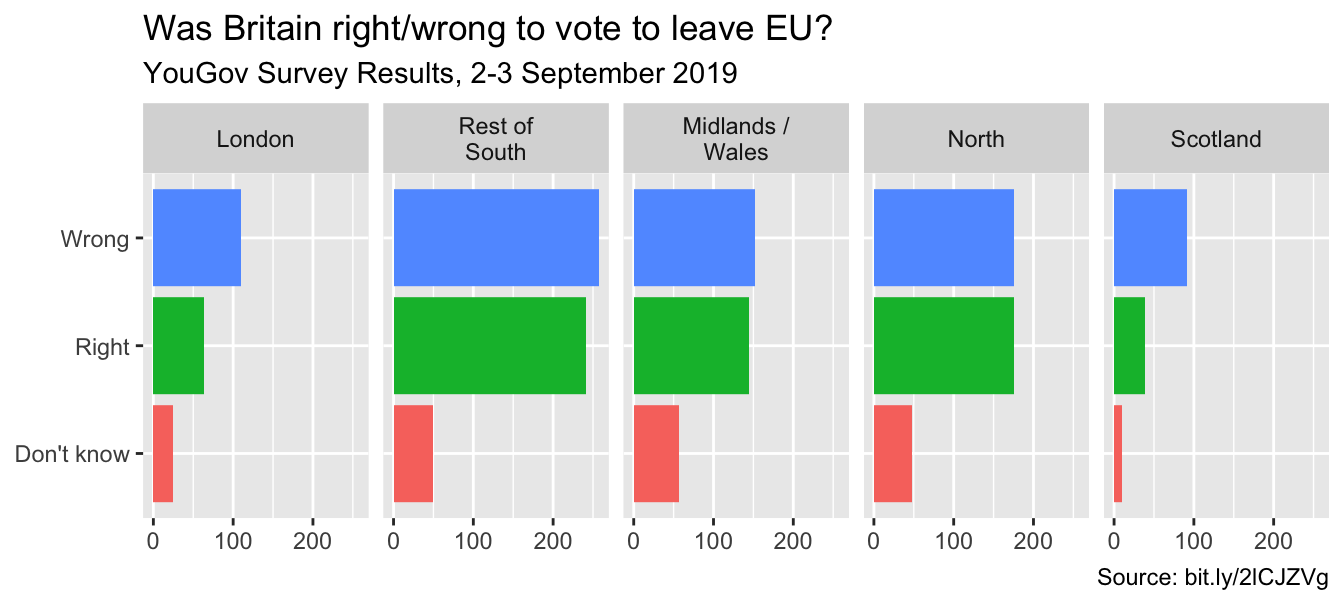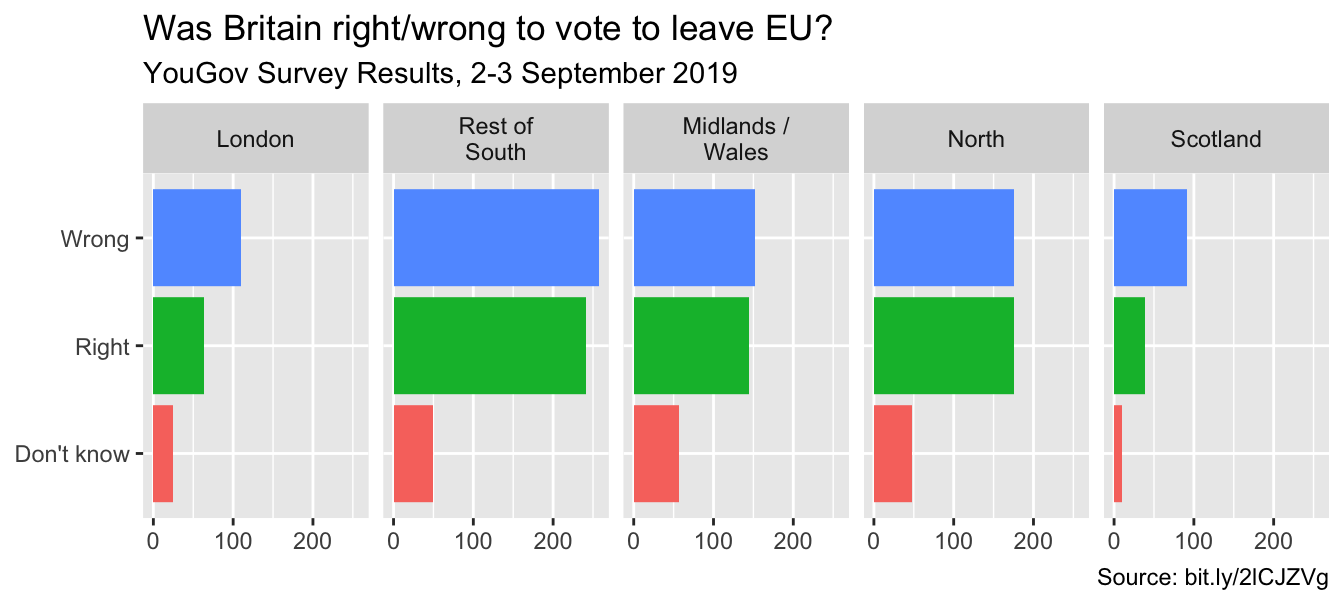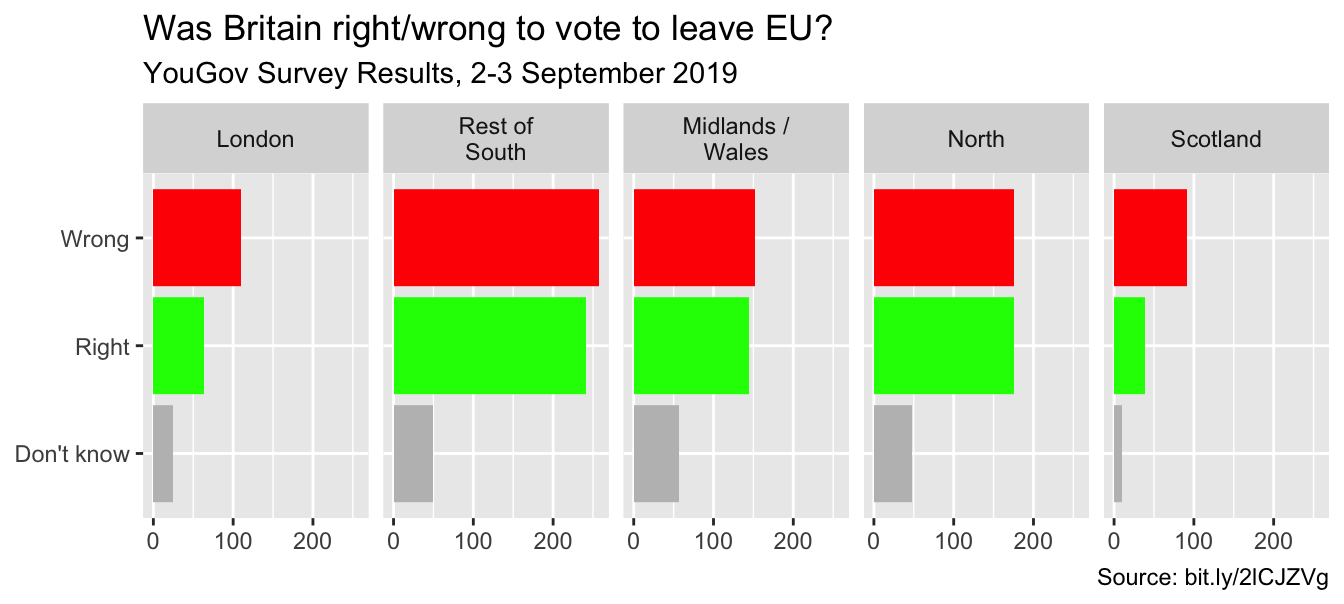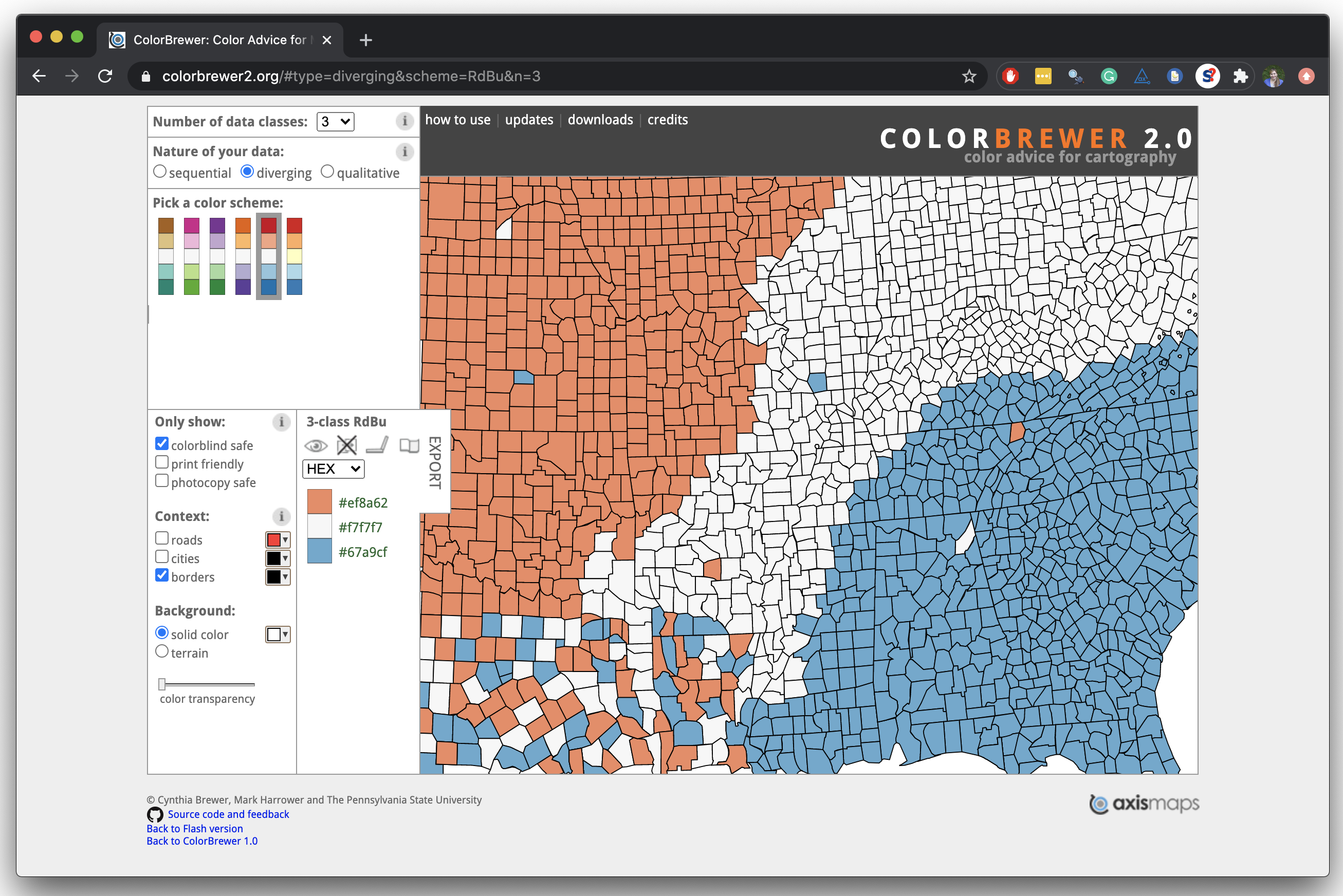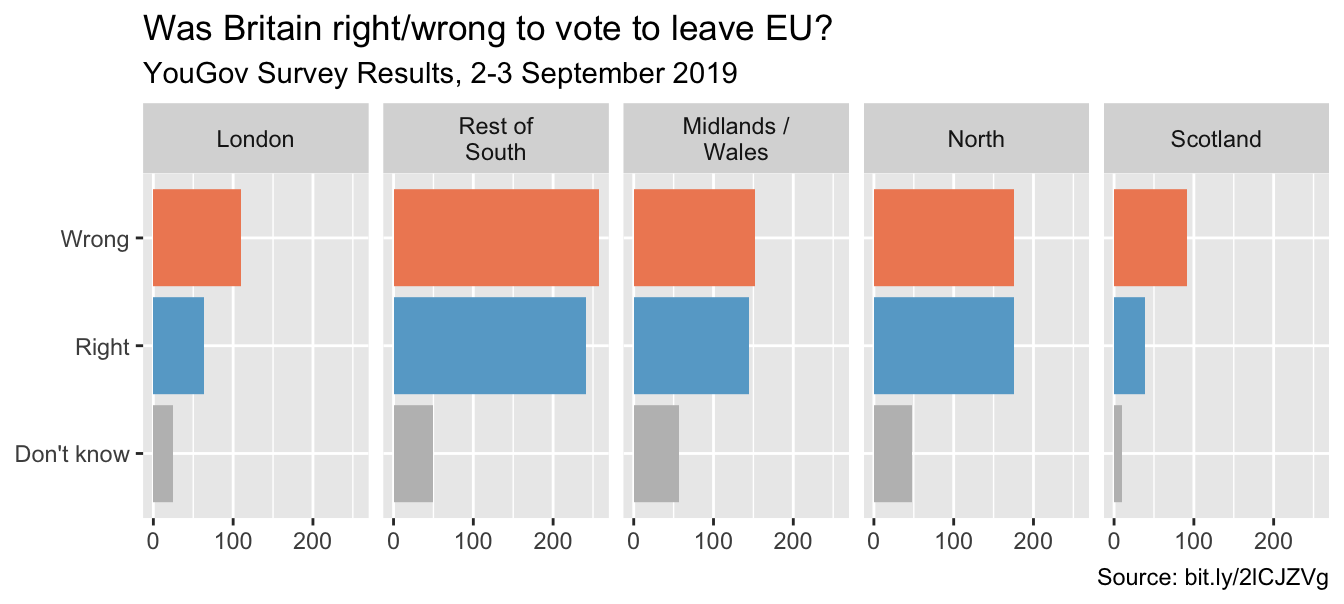Interactive editor
Interactive code sections look like this. Make changes in the text box and click on the green “Run Code” button to see the results. Sometimes there will be a tab with a hint or solution.
- Run selected code:
- macOS: ⌘ + ↩︎/Return
- Windows/Linux: Ctrl + ↩︎/Enter
- To run the entire code cell, you can simply click the “Run code” button, or use the keyboard shortcut:
- Shift + ↩︎
If you’re curious how this works, each interactive code section uses the amazing {quarto-webr} package to run R directly in your browser.
Overview
Terminology
- Univariate data analysis - distribution of single variable
- Bivariate data analysis - relationship between two variables
- Multivariate data analysis - relationship between many variables at once, usually focusing on the relationship between two while conditioning for others
- Numerical variables can be classified as continuous or discrete based on whether or not the variable can take on an infinite number of values or only non-negative whole numbers, respectively.
- If the variable is categorical, we can determine if it is ordinal based on whether or not the levels have a natural ordering.
Data: Lending Club
Thousands of loans made through the Lending Club, which is a platform that allows individuals to lend to other individuals
Not all loans are created equal – ease of getting a loan depends on (apparent) ability to pay back the loan
Data includes loans made, these are not loan applications
Take a peek at data
library(openintro)
library(tidyverse)
glimpse(loans_full_schema)Rows: 10,000
Columns: 55
$ emp_title <chr> "global config engineer ", "warehouse…
$ emp_length <dbl> 3, 10, 3, 1, 10, NA, 10, 10, 10, 3, 1…
$ state <fct> NJ, HI, WI, PA, CA, KY, MI, AZ, NV, I…
$ homeownership <fct> MORTGAGE, RENT, RENT, RENT, RENT, OWN…
$ annual_income <dbl> 90000, 40000, 40000, 30000, 35000, 34…
$ verified_income <fct> Verified, Not Verified, Source Verifi…
$ debt_to_income <dbl> 18.01, 5.04, 21.15, 10.16, 57.96, 6.4…
$ annual_income_joint <dbl> NA, NA, NA, NA, 57000, NA, 155000, NA…
$ verification_income_joint <fct> , , , , Verified, , Not Verified, , ,…
$ debt_to_income_joint <dbl> NA, NA, NA, NA, 37.66, NA, 13.12, NA,…
$ delinq_2y <int> 0, 0, 0, 0, 0, 1, 0, 1, 1, 0, 0, 0, 0…
$ months_since_last_delinq <int> 38, NA, 28, NA, NA, 3, NA, 19, 18, NA…
$ earliest_credit_line <dbl> 2001, 1996, 2006, 2007, 2008, 1990, 2…
$ inquiries_last_12m <int> 6, 1, 4, 0, 7, 6, 1, 1, 3, 0, 4, 4, 8…
$ total_credit_lines <int> 28, 30, 31, 4, 22, 32, 12, 30, 35, 9,…
$ open_credit_lines <int> 10, 14, 10, 4, 16, 12, 10, 15, 21, 6,…
$ total_credit_limit <int> 70795, 28800, 24193, 25400, 69839, 42…
$ total_credit_utilized <int> 38767, 4321, 16000, 4997, 52722, 3898…
$ num_collections_last_12m <int> 0, 0, 0, 0, 0, 0, 0, 0, 0, 0, 0, 0, 0…
$ num_historical_failed_to_pay <int> 0, 1, 0, 1, 0, 0, 0, 0, 0, 0, 1, 0, 0…
$ months_since_90d_late <int> 38, NA, 28, NA, NA, 60, NA, 71, 18, N…
$ current_accounts_delinq <int> 0, 0, 0, 0, 0, 0, 0, 0, 0, 0, 0, 0, 0…
$ total_collection_amount_ever <int> 1250, 0, 432, 0, 0, 0, 0, 0, 0, 0, 0,…
$ current_installment_accounts <int> 2, 0, 1, 1, 1, 0, 2, 2, 6, 1, 2, 1, 2…
$ accounts_opened_24m <int> 5, 11, 13, 1, 6, 2, 1, 4, 10, 5, 6, 7…
$ months_since_last_credit_inquiry <int> 5, 8, 7, 15, 4, 5, 9, 7, 4, 17, 3, 4,…
$ num_satisfactory_accounts <int> 10, 14, 10, 4, 16, 12, 10, 15, 21, 6,…
$ num_accounts_120d_past_due <int> 0, 0, 0, 0, 0, 0, 0, NA, 0, 0, 0, 0, …
$ num_accounts_30d_past_due <int> 0, 0, 0, 0, 0, 0, 0, 0, 0, 0, 0, 0, 0…
$ num_active_debit_accounts <int> 2, 3, 3, 2, 10, 1, 3, 5, 11, 3, 2, 2,…
$ total_debit_limit <int> 11100, 16500, 4300, 19400, 32700, 272…
$ num_total_cc_accounts <int> 14, 24, 14, 3, 20, 27, 8, 16, 19, 7, …
$ num_open_cc_accounts <int> 8, 14, 8, 3, 15, 12, 7, 12, 14, 5, 8,…
$ num_cc_carrying_balance <int> 6, 4, 6, 2, 13, 5, 6, 10, 14, 3, 5, 3…
$ num_mort_accounts <int> 1, 0, 0, 0, 0, 3, 2, 7, 2, 0, 2, 3, 3…
$ account_never_delinq_percent <dbl> 92.9, 100.0, 93.5, 100.0, 100.0, 78.1…
$ tax_liens <int> 0, 0, 0, 1, 0, 0, 0, 0, 0, 0, 0, 0, 0…
$ public_record_bankrupt <int> 0, 1, 0, 0, 0, 0, 0, 0, 0, 0, 1, 0, 0…
$ loan_purpose <fct> moving, debt_consolidation, other, de…
$ application_type <fct> individual, individual, individual, i…
$ loan_amount <int> 28000, 5000, 2000, 21600, 23000, 5000…
$ term <dbl> 60, 36, 36, 36, 36, 36, 60, 60, 36, 3…
$ interest_rate <dbl> 14.07, 12.61, 17.09, 6.72, 14.07, 6.7…
$ installment <dbl> 652.53, 167.54, 71.40, 664.19, 786.87…
$ grade <ord> C, C, D, A, C, A, C, B, C, A, C, B, C…
$ sub_grade <fct> C3, C1, D1, A3, C3, A3, C2, B5, C2, A…
$ issue_month <fct> Mar-2018, Feb-2018, Feb-2018, Jan-201…
$ loan_status <fct> Current, Current, Current, Current, C…
$ initial_listing_status <fct> whole, whole, fractional, whole, whol…
$ disbursement_method <fct> Cash, Cash, Cash, Cash, Cash, Cash, C…
$ balance <dbl> 27015.86, 4651.37, 1824.63, 18853.26,…
$ paid_total <dbl> 1999.330, 499.120, 281.800, 3312.890,…
$ paid_principal <dbl> 984.14, 348.63, 175.37, 2746.74, 1569…
$ paid_interest <dbl> 1015.19, 150.49, 106.43, 566.15, 754.…
$ paid_late_fees <dbl> 0, 0, 0, 0, 0, 0, 0, 0, 0, 0, 0, 0, 0…Selected variables
loans <- loans_full_schema %>%
select(loan_amount, interest_rate, term, grade,
state, annual_income, homeownership, debt_to_income)
glimpse(loans)Rows: 10,000
Columns: 8
$ loan_amount <int> 28000, 5000, 2000, 21600, 23000, 5000, 24000, 20000, 20…
$ interest_rate <dbl> 14.07, 12.61, 17.09, 6.72, 14.07, 6.72, 13.59, 11.99, 1…
$ term <dbl> 60, 36, 36, 36, 36, 36, 60, 60, 36, 36, 60, 60, 36, 60,…
$ grade <ord> C, C, D, A, C, A, C, B, C, A, C, B, C, B, D, D, D, F, E…
$ state <fct> NJ, HI, WI, PA, CA, KY, MI, AZ, NV, IL, IL, FL, SC, CO,…
$ annual_income <dbl> 90000, 40000, 40000, 30000, 35000, 34000, 35000, 110000…
$ homeownership <fct> MORTGAGE, RENT, RENT, RENT, RENT, OWN, MORTGAGE, MORTGA…
$ debt_to_income <dbl> 18.01, 5.04, 21.15, 10.16, 57.96, 6.46, 23.66, 16.19, 3…Selected variables
| variable | type | description |
|---|---|---|
loan_amount |
numerical, continuous | Amount of the loan received, in US dollars |
interest_rate |
numerical, continuous | Interest rate on the loan, in an annual percentage |
term |
numerical, discrete | The length of the loan, which is always set as a whole number of months |
grade |
categorical, ordinal | Loan grade, which takes a values A through G and represents the quality of the loan and its likelihood of being repaid |
state |
categorical, not ordinal | US state where the borrower resides |
annual_income |
numerical, continuous | Borrower’s annual income, including any second income, in US dollars |
homeownership |
categorical, not ordinal | Indicates whether the person owns, owns but has a mortgage, or rents |
debt_to_income |
numerical, continuous | Debt-to-income ratio |
Visualizing Continous data
Describing shapes of numerical distributions
- shape:
- skewness: right-skewed, left-skewed, symmetric (skew is to the side of the longer tail)
- modality: unimodal, bimodal, multimodal, uniform
- center: mean (
mean), median (median), mode (not always useful) - spread: range (
range), standard deviation (sd), inter-quartile range (IQR) - unusual observations
Histogram
Histogram
summary(loans$loan_amount) Min. 1st Qu. Median Mean 3rd Qu. Max.
1000 8000 14500 16362 24000 40000 ggplot(loans, aes(x = loan_amount)) +
geom_histogram()`stat_bin()` using `bins = 30`. Pick better value with `binwidth`.Create a histogram for the interest_rate variable.
Histograms and binwidth
Customizing labels of histograms
ggplot(loans, aes(x = loan_amount)) +
geom_histogram(binwidth = 5000) +
1 labs(
x = "Loan amount ($)",
y = "Frequency",
title = "Amounts of Lending Club loans"
) - 1
-
labs()can modify axis, legend, and plot labels. You can also usexlabandylabto modify labels for x and y axis, respectively.
Fill with a categorical variable
ggplot(loans, aes(x = loan_amount,
1 fill = homeownership)) +
geom_histogram(binwidth = 5000,
2 alpha = 0.5) +
labs(
x = "Loan amount ($)",
y = "Frequency",
title = "Amounts of Lending Club loans"
)- 1
-
Add
homeownershipto fill with certain category - 2
-
Add
alpha=argument to set up transparency for the figure
Facet with a categorical variable
Color of bar borders
Position of Histogram Bars
Density plot
Density plot
Density plots and adjusting bandwidth
Customizing density plots
Adding a categorical variable
Box plot
Box plot
- Boxplot visualises five summary statistics (the median, two hinges and two whiskers), and all “outlying” points individually.
- The lower and upper hinges correspond to the first and third quartiles (the 25th and 75th percentiles).
- The whiskers extend from the hinge to the smallest and largest value no further than 1.5 * IQR from the hinge (where IQR is the inter-quartile range, or distance between the first and third quartiles).
Box plot and outliers
Customizing box plots
Adding a categorical variable
Relationships numerical variables
Scatterplot
Hex plot
Hex plot
Visualize Categorical Variable
Bar plot
Segmented bar plot
Segmented bar plot
Which bar plot is a more useful representation for visualizing the relationship between homeownership and grade?
Customizing bar plots
Relationships between numerical and categorical variables
Already talked about…
- Colouring and faceting histograms and density plots
- Side-by-side box plots
Violin plots
Ridge plots
Designing effective visualizations
Keep it simple
Use color to draw attention
Tell a story
Credit: Angela Zoss and Eric Monson, Duke DVS
Principles for effective visualizations
Principles for effective visualizations
- Order matters
- Put long categories on the y-axis
- Keep scales consistent
- Select meaningful colors
- Use meaningful and nonredundant labels
Data
In September 2019, YouGov survey asked 1,639 GB adults the following question:
In hindsight, do you think Britain was right/wrong to vote to leave EU?
- Right to leave
- Wrong to leave
- Don’t know
Source: YouGov Survey Results, retrieved Oct 7, 2019
Order matters
Alphabetical order is rarely ideal
Order by frequency
Clean up labels
Alphabetical order is rarely ideal
Use inherent level order
Clean up labels
Put long categories on the y-axis
Long categories can be hard to read
Move them to the y-axis
And reverse the order of levels
Clean up labels
Pick a purpose
Segmented bar plots can be hard to read
Use facets
Avoid redundancy?
Redundancy can help tell a story
Be selective with redundancy
Use informative labels
A bit more info
ggplot(brexit, aes(y = opinion, fill = opinion)) +
geom_bar() +
facet_wrap(~region, nrow = 1) +
guides(fill = "none") +
labs(
title = "Was Britain right/wrong to vote to leave EU?",
subtitle = "YouGov Survey Results, 2-3 September 2019", #<<
caption = "Source: https://d25d2506sfb94s.cloudfront.net/cumulus_uploads/document/x0msmggx08/YouGov%20-%20Brexit%20and%202019%20election.pdf", #<<
x = NULL, y = NULL
)Let’s do better
Fix up facet labels
ggplot(brexit, aes(y = opinion, fill = opinion)) +
geom_bar() +
facet_wrap(~region,
nrow = 1,
labeller = label_wrap_gen(width = 12) #<<
) +
guides(fill = "none") +
labs(
title = "Was Britain right/wrong to vote to leave EU?",
subtitle = "YouGov Survey Results, 2-3 September 2019",
caption = "Source: bit.ly/2lCJZVg",
x = NULL, y = NULL
)Select meaningful colors
Rainbow colors not always the right choice
Manually choose colors when needed
ggplot(brexit, aes(y = opinion, fill = opinion)) +
geom_bar() +
facet_wrap(~region, nrow = 1, labeller = label_wrap_gen(width = 12)) +
guides(fill = "none") +
labs(title = "Was Britain right/wrong to vote to leave EU?",
subtitle = "YouGov Survey Results, 2-3 September 2019",
caption = "Source: bit.ly/2lCJZVg",
x = NULL, y = NULL) +
scale_fill_manual(values = c( #<<
"Wrong" = "red", #<<
"Right" = "green", #<<
"Don't know" = "gray" #<<
)) #<<Choosing better colors
Use better colors
ggplot(brexit, aes(y = opinion, fill = opinion)) +
geom_bar() +
facet_wrap(~region, nrow = 1, labeller = label_wrap_gen(width = 12)) +
guides(fill = "none") +
labs(title = "Was Britain right/wrong to vote to leave EU?",
subtitle = "YouGov Survey Results, 2-3 September 2019",
caption = "Source: bit.ly/2lCJZVg",
x = NULL, y = NULL) +
scale_fill_manual(values = c(
"Wrong" = "#ef8a62", #<<
"Right" = "#67a9cf", #<<
"Don't know" = "gray" #<<
))Select theme
ggplot(brexit, aes(y = opinion, fill = opinion)) +
geom_bar() +
facet_wrap(~region, nrow = 1, labeller = label_wrap_gen(width = 12)) +
guides(fill = "none") +
labs(title = "Was Britain right/wrong to vote to leave EU?",
subtitle = "YouGov Survey Results, 2-3 September 2019",
caption = "Source: bit.ly/2lCJZVg",
x = NULL, y = NULL) +
scale_fill_manual(values = c("Wrong" = "#ef8a62",
"Right" = "#67a9cf",
"Don't know" = "gray")) +
theme_minimal() #<<

































